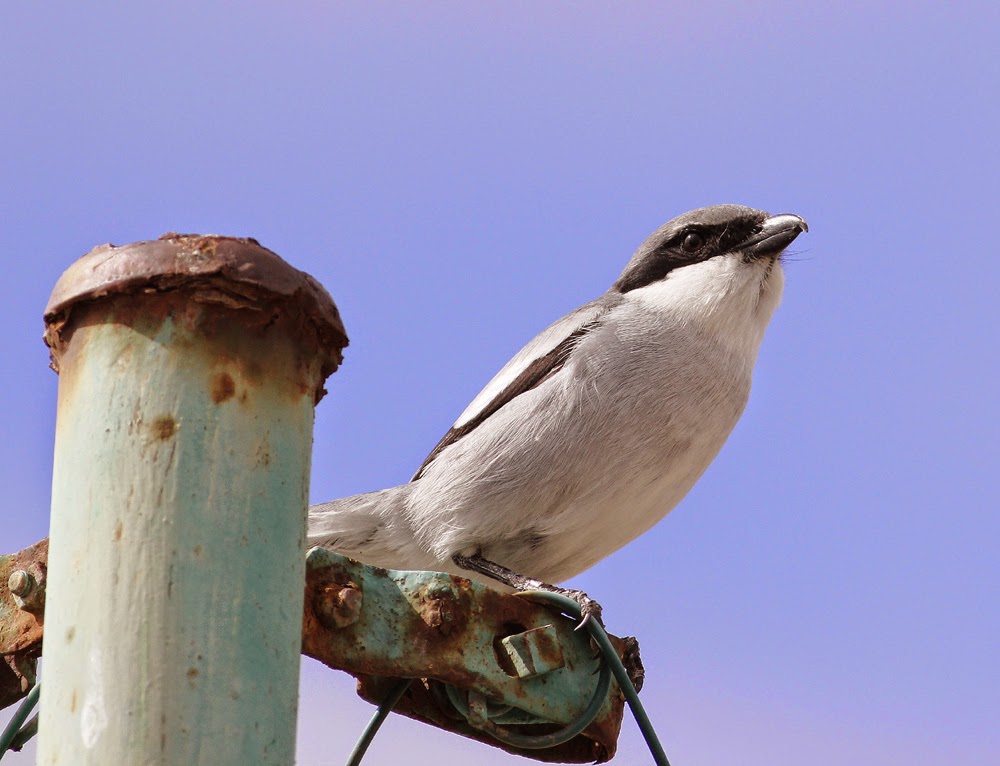The blog has been quiet of late. That’s because Sue and I took ourselves off to the Canary Islands for a two week break from the wintry weather of the UK.
There are quite a number of photos from the past two weeks, enough to compile a couple of posts while finding time to return to local birds after catching up with family, friends, post and email.
Lanzarote is an inexpensive destination and just a four hour flight from Manchester. Sharing the same time zones with the UK means that following an early flight we can be relaxing in the January sunshine soon after lunch while planning our explorations for the following days. While Lanzarote may not be the most exciting birding destination in the world its closeness to Africa, the desert-like climate and minimal rainfall means that a number of its bird species are quite specialised.
We walked and took a bus during the early and last days of the holiday and hired a car to explore further afield in the middle period.
On only the second day we found a pair of Trumpeter Finches along a coastal walk, the birds feeding amongst patches of sparse ground cover dotted amongst the mainly rocky cost between Costa Calero, Peurto del Carmen and Playa Quemada. The name Trumpeter Finch might suggest a rather gregarious species with a loud and strident call, but my own experience in the Canary Islands is that the species is rather shy. It also has a quiet, slightly tinny call which can be easily overlooked, somewhat like the calls of our own UK Bullfinch.
Trumpeter Finch
Heading away from the hotel and the suburbia of Costa Calero we left behind a number of Desert Grey Shrikes, the birds using abandoned building plots and even well-established gardens from which to proclaim their territories. The male shrikes have a very loud, far-carrying but monotonous “song” which they recite from very obvious vantage points, including TV aerials, all of which makes it easy to work out the limits and size of each territory.
Desert Grey Shrike
I watched a pair of shrikes feed young out of the nest until they were disturbed from parental duties by a rather large, feral marauding cat. It was quite amazing to watch the two birds mercilessly chase off the cat with a combination of flying directly at the animal plus their constant and very loud shrieking protests. One of the shrikes used the corner post of a tennis court fence from which to voice a protest at the cat. Maybe it helped when I lobbed a large piece of volcanic rock at the cat too?
Desert Grey Shrike
Desert Grey Shrike
It seemed to be Spring in Lanzarote as evidenced by the amount of flowers blooming through the volcanic landscape and then later in the week by finding more evidence of breeding in both Desert Grey Shrike and Stone Curlew. Wherever we saw Berthelot’s Pipits they appeared in pairs but not in family groups and the few Spectacled Warblers noted were in song.
Spring flowers, Lanzarote
Berthelot's Pipit
Spectacled Warbler
The headland towards Playa Quemada has a couple of stone circles which aren’t quite Stonehenge but where folk are at least allowed to add their own contribution. It’s in spots like this where someone might glimpse the local lizards of the genus Gallotia, the wall lizards of the Canary Islands, a group that has been evolving there ever since the first Canary islands emerged from the sea over 20 million years ago. Their colouration certainly helps them to merge into the volcanic landscape.
Lanzarote lizard
Stone circle, Playa Quemada, Lanzarote
Playa Quemada has a couple of restaurants, a dozen or two houses and not much else apart from a Common Sandpiper and the inevitable Yellow-legged Gulls which hang about waiting for a meal. After a plate of tapas it’s time to head back for another invigorating walk in the bright sunshine.
Common Sandpiper
Yellow-legged Gull
Playa Quemada, Lanzarote
Playa Quemada, Lanzarote
There's more soon from Another Bird Blog. Andy tells me there are loads of birds at the feeding station and while I've been away he's caught both Siskins and Lesser Redpolls - stay tuned.
Linking today to Run-a-Roundranch and Stewart's World Bird Wednesday.
Linking today to Run-a-Roundranch and Stewart's World Bird Wednesday.























































































